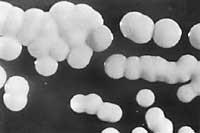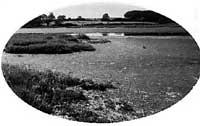Anbarra and its treasures
1995/09/01 Elhuyar Zientzia Iturria: Elhuyar aldizkaria
The last 40 million years have passed “sleeping” the bacteria shown in the attached figure. However, at the University of California they have managed to resurface. The bee detected in an amber deposit is expected to provide us with more information in the coming months than expected.

By placing the bacterial spores that were in the digestive tract of the bee and under a special nutritional state, the bacterium Bacillus sphaericus has been resurrected. At least the scientists in charge of the research project have announced this. Although it is believed that this bacteria is familiar to the one currently living in the bee's digestive tract, some researchers believe that the bacteria have suffered a certain mutation due to contamination.
At the moment this point has not been clarified, but all agree that this discovery is one of the most important advances that paleomicrobiology has known in recent years.

Gai honi buruzko eduki gehiago
Elhuyarrek garatutako teknologia





